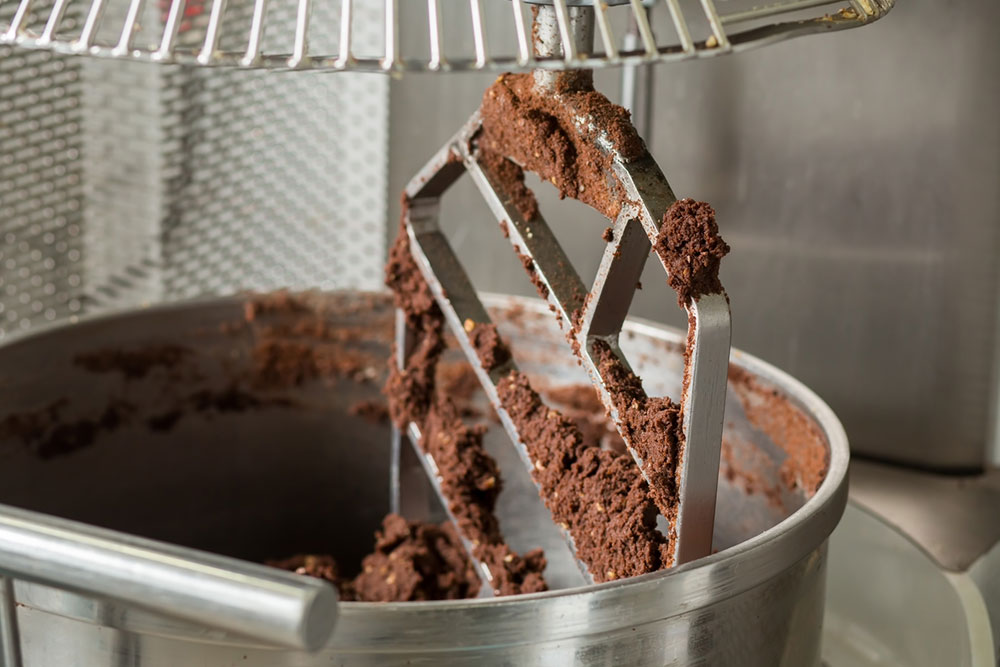6 types of industrial mixers and their uses

Numerous items used in daily life have a similar production and manufacturing process. These could be used in the kitchen, bathroom, garage, or even restaurants and pharmacies. Items like sauces, tea blends, soups, toothpaste, shampoos, and health supplements are all made with the help of industrial mixers. Industries use different mixers based on the material used and the desired product. For example, sanitary mixers are most commonly used in the food and beverage industry.
What is an industrial mixer?
Industrial mixers are heavy-duty machinery used to emulsify, homogenize, blend, or mix different materials. These machines can be used for production and manufacturing products in several industries. Different industrial mixers are used to blend materials of different shapes, sizes, viscosities, and densities. The most common types of mixing used are batch and continual mixing. Batch mixing is when the industry uses a fixed amount of material and time for the process. On the other hand, the continual mixing method is used when ingredients are gradually added, and the mixture keeps thickening with the help of aggressive agitation.
Sanitary mixers
Sanitary mixers can be used to mix different liquids and gases. It is commonplace in the food and beverage industry. Biotech and pharmaceutical industries also make use of this industrial mixer. These machines are manufactured and operated with the most stringent codes and regulations in mind to ensure that the food, beverages, and other products meet the required hygiene and cleanliness standards. These machines are also popular in the dairy and juice industries. Different sanitary mixers include agitator mixers, high-shear mixers, ribbon mixers, paddle mixers, and others.
Ribbon mixers
Ribbon mixers are a type of static mixer with no moving parts. These industrial mixers have flat and thin blades that act as an obstruction for the material in them. The material has to go around these blades for the mixing to proceed, and the constant process helps the material to combine and mix homogeneously. Ribbon mixers are used when handling and mixing a wide range of bulk solids and powders. The machines can be efficiently used in both small and large-scale industries. A key benefit of the ribbon mixer is it can easily combine materials of different shapes, sizes, and densities. They can be applied in various industries, such as dry food; for example, they can be used in companies that produce protein powder mixes, nutraceuticals, dry juice mixes, and more.
Agitator mixers
Agitator mixers are used when several materials need to be blended together, including materials in different states like solids, liquids, and gases. Agitator mixers are used when there is a need for suspensions, slurries, and viscous media to be blended. The machines operate with the help of a rotating impeller that rotates and blends these mixes. Components of this industrial application mixture include a gearbox, motor, impeller, and shaft. In most cases, agitator mixers are top-entry devices. A key benefit of this agitator mixer type is that it helps mix a wider range of materials with different viscosity. With a top-entry agitator, industries also avoid the issue of mechanical seals being submerged in the mix. Additionally, industries use bottom-entry agitators and side-entry agitators. Agitator mixers can be used in water treatment, pharmaceutical, chemical, food, and other industries.
Static mixers
Static mixers consist of thin ribbon-like blades situated within a cylinder container. They are also known as inline mixers, which help mix and blend materials. These mixers are used for batch-mixing purposes and have only static parts. Thus, they depend on the continuous flow of material, which helps in steady mixing and continuity. Static mixers or inline mixers are typically used in industries that need to mix low-viscosity materials. Industries that can make the most of static mixers include food, cosmetics, chemical, pharmaceutical, automotive, and water treatment.
Drum mixers
Drum mixers have either a single blade or multiple sets of blades on the inside. The decision is made depending on the type of materials used. A robust frame and internal paddles support the constant rotation and tumbling of the drum. Drum mixers are available in various sizes. They are preferred in several industries because of their tight seal and ease of transport, as well as because they can be used to blend various materials of different sizes. Typically, these mixers are used to blend low-to-medium viscosity media. These can include slurries, adhesives, and cement. Industrial drum mixers can be used in the food industry to mix soup ingredients, tea blends, and food enriched with vitamins.
High-shear mixers
As the name suggests, high-shear mixers are machines that operate at high speeds and use powerful blades. These mixers are a perfect choice for industries looking to emulsify, homogenize, disperse, reduce particle size, or disintegrate the different states of materials used. It uses the force of both, rotating and stationary parts of the equipment to deliver the desired results. The rotating parts of the machine include impellers, paddles, screws, or a set of more than one of these. High-shear mixers, however, consume considerably more power than the other mixers. These are beneficial in industries that are looking to emulsify or combine liquids into a stable mixture. Sauces, salad dressings, and especially mayonnaise can be produced with the help of high-shear mixtures.